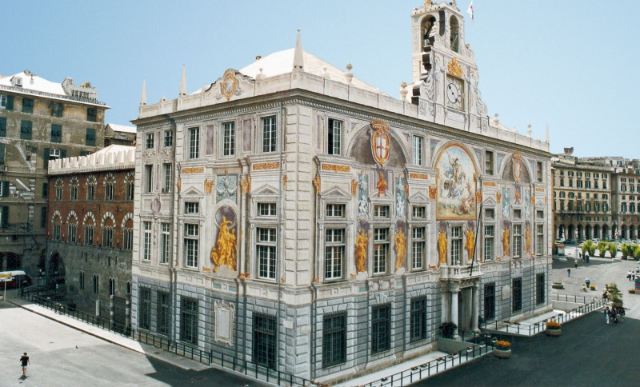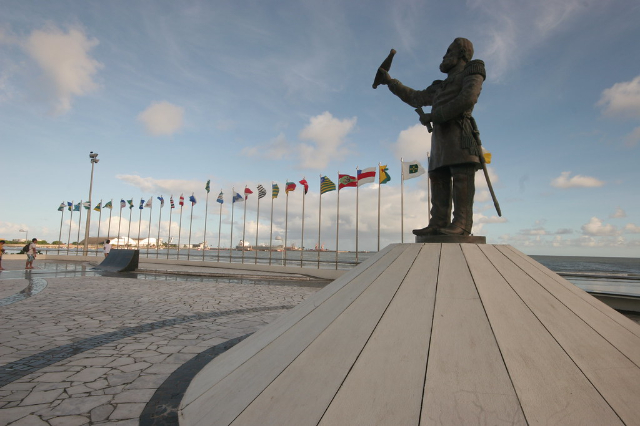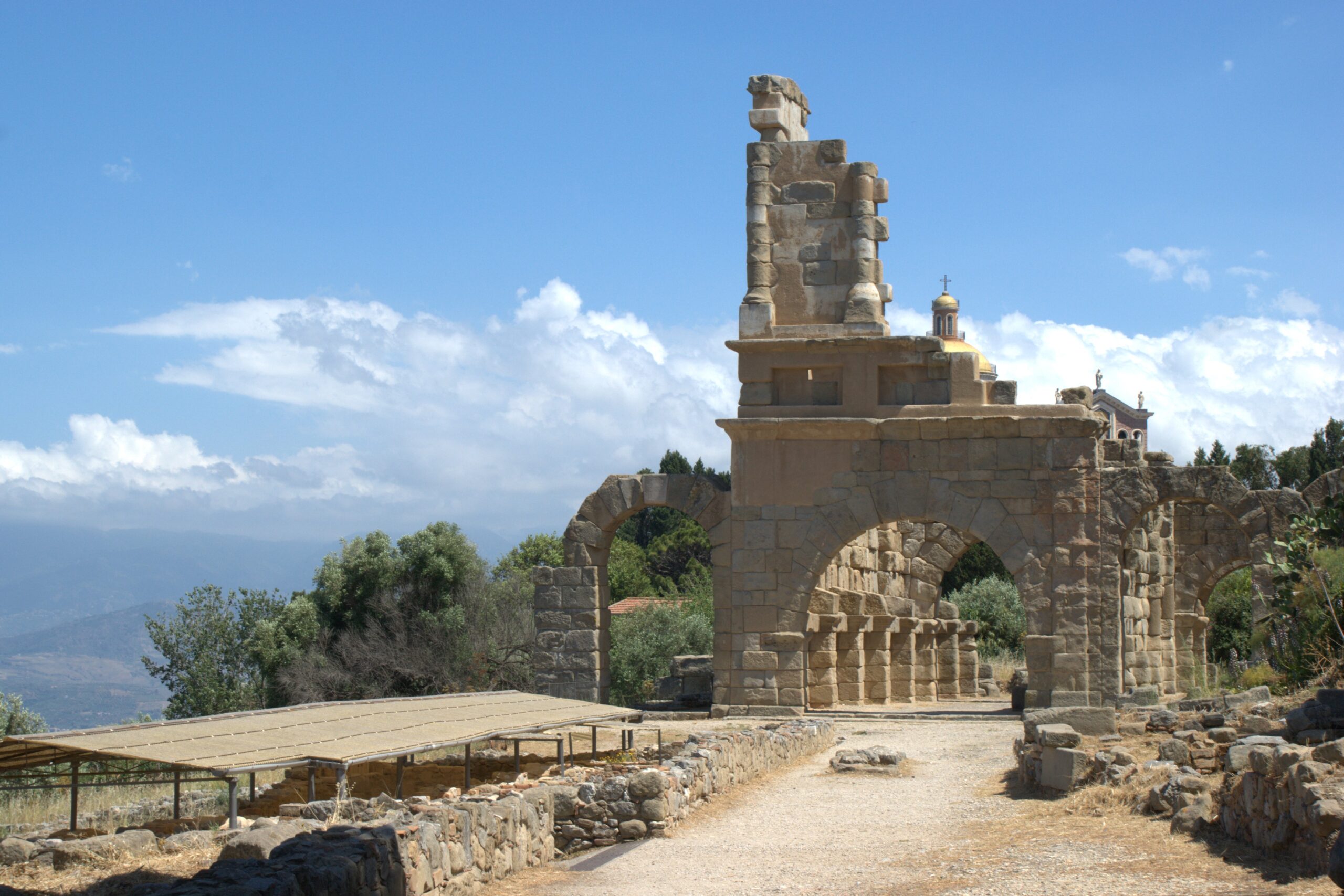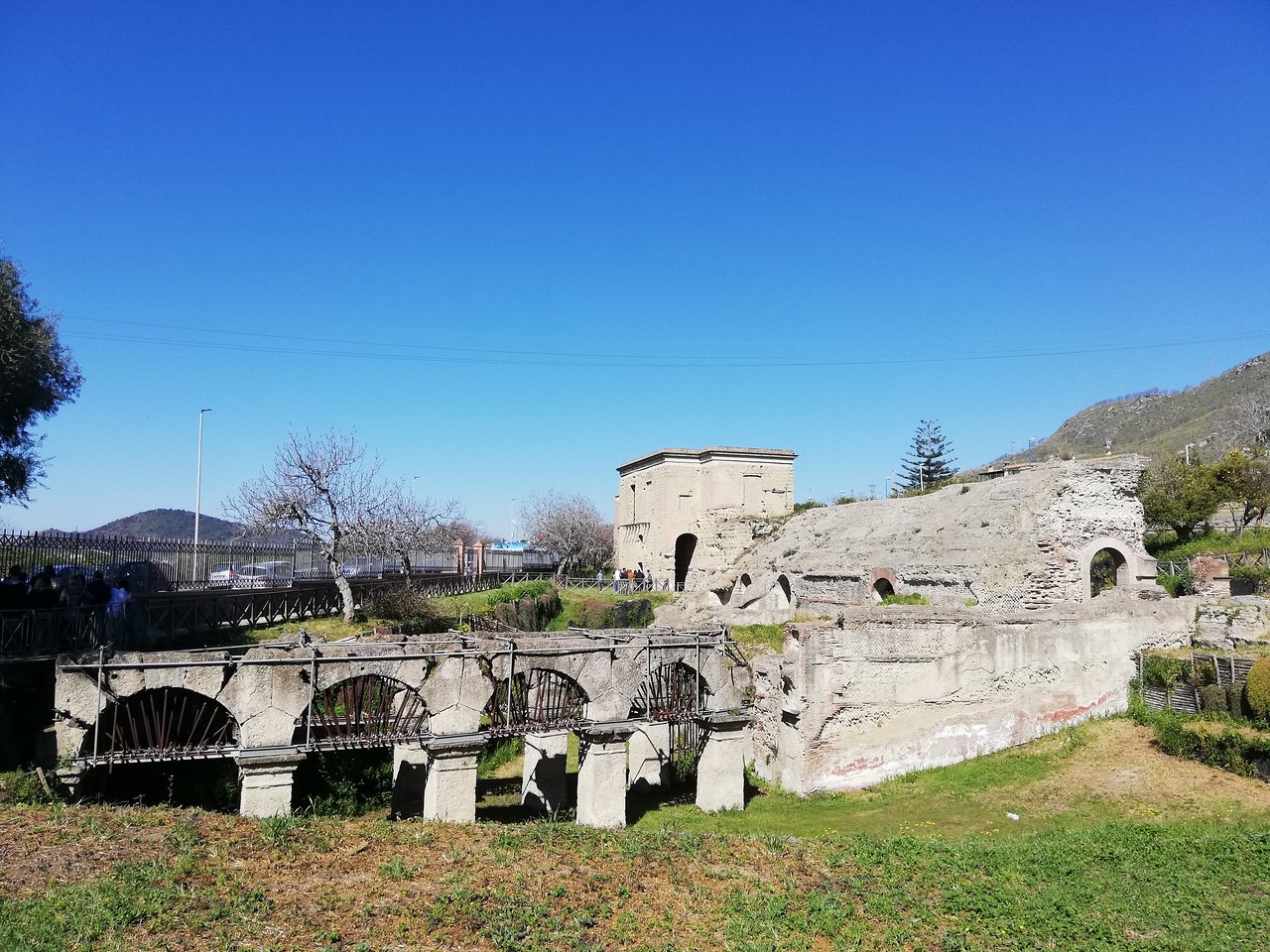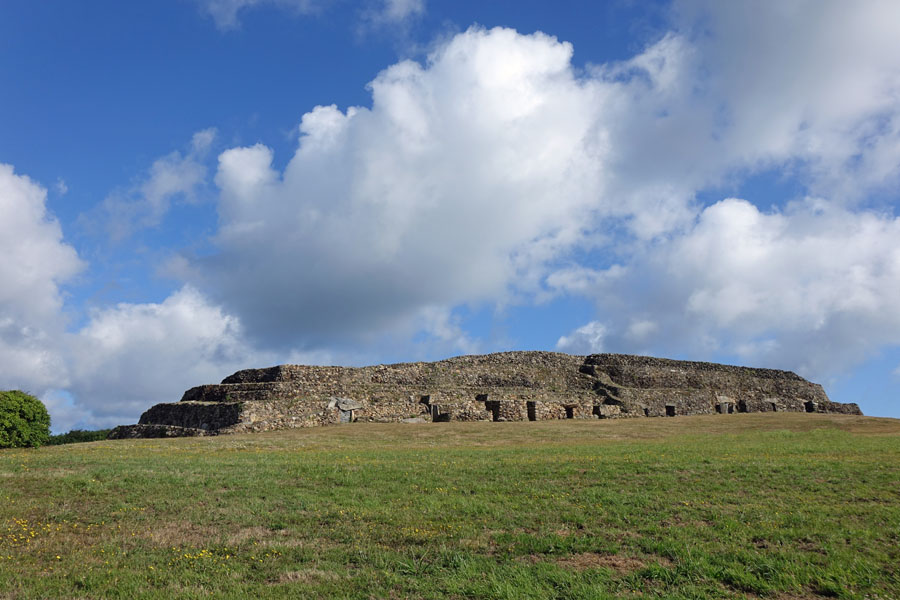PALAZZO SAN GIORGIO OR THE Palace of Saint George, may not be among Genoa’s top tourist attractions, but its historic significance is more than worth noting. Not only is it the site where Marco Polo’s famous memoirs were written, but it also once housed one of the oldest banks in history.
Nowadays it hosts the headquarters of the Autorità di Sistema Portuale del Mar Ligure Occidentale. The palace is located in the docks area and is formed by two different parts: the ancient one, a typical example of medieval architecture, front pointed towards the Sottoripa portico, and the Renaissance one, oriented south. The main entrance is located on this side in front of the Porto Antico, facing via della Mercanzia, a small alley that links piazza Caricamento to piazza Cavour.
The palace was built between 1257 and il 1260 and was commissioned by the Capitano del Popolo Guglielmo Boccanegra, who wanted to realize the headquarters of the civic power in order to differentiate it from the religious power, installed in the Cattedrale di San Lorenzo. The design for the new public palace was entrusted to Frate Oliverio, a Cistercian monk, who had already designed he extension of the Ancient Dock to the sea, thanks to his technical skills. According to a legend, during the second half of the 13th century, in this palace Marco Polo was held prisoner.
Since 1340 the palace became the headquarters of the judiciaries authorities for the supervision of port trades and here were installed the customs and the offices of the so called Compere, the authorities entrusted with the management of credit from citizens to the Municipality. In 1407 all the Compere were reunited under a single authorty: it was the birth of the Casa delle Compere e dei Banchi di San Giorgio, one of the first banks, born in Italy. Since 1451 the entire building was managed by the Bank of San Giorgio, and got its name.
In 1903 the palace became the headquarters of the Port Authorities, which was called Consorzio Autonomo del Porto di Genova.
